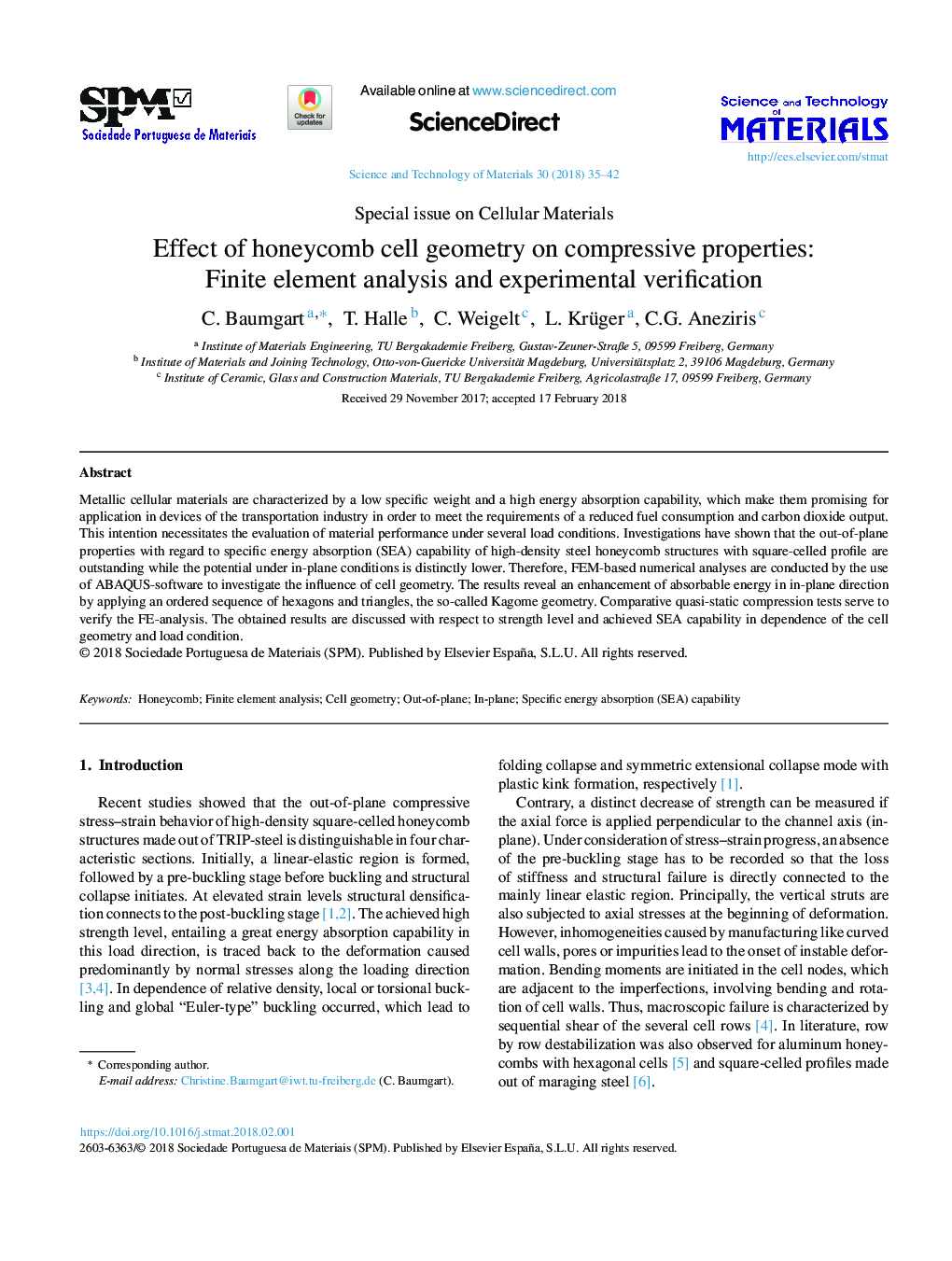| Article ID | Journal | Published Year | Pages | File Type |
|---|---|---|---|---|
| 8941161 | Science and Technology of Materials | 2018 | 8 Pages |
Abstract
Metallic cellular materials are characterized by a low specific weight and a high energy absorption capability, which make them promising for application in devices of the transportation industry in order to meet the requirements of a reduced fuel consumption and carbon dioxide output. This intention necessitates the evaluation of material performance under several load conditions. Investigations have shown that the out-of-plane properties with regard to specific energy absorption (SEA) capability of high-density steel honeycomb structures with square-celled profile are outstanding while the potential under in-plane conditions is distinctly lower. Therefore, FEM-based numerical analyses are conducted by the use of ABAQUS-software to investigate the influence of cell geometry. The results reveal an enhancement of absorbable energy in in-plane direction by applying an ordered sequence of hexagons and triangles, the so-called Kagome geometry. Comparative quasi-static compression tests serve to verify the FE-analysis. The obtained results are discussed with respect to strength level and achieved SEA capability in dependence of the cell geometry and load condition.
Related Topics
Physical Sciences and Engineering
Engineering
Engineering (General)
Authors
C. Baumgart, T. Halle, C. Weigelt, L. Krüger, C.G. Aneziris,
